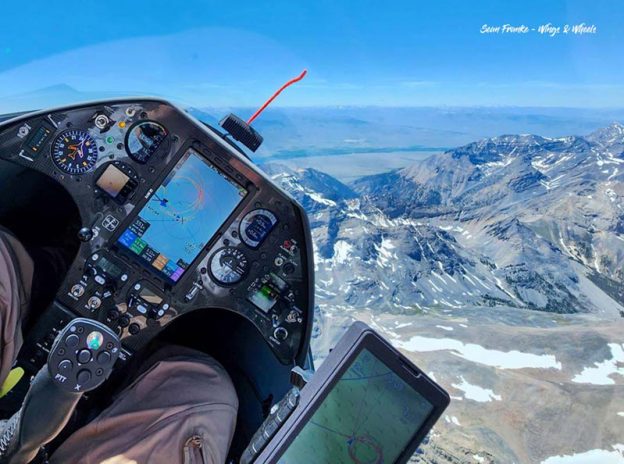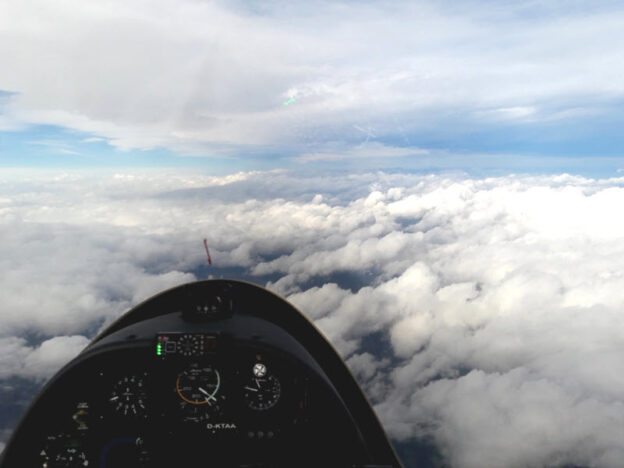
If you’ve ever watched a glider gracefully manoeuvre through the sky, or you’ve just started your life’s soaring adventure you might wonder how they or we manage to stay aloft for so long without an engine. One of the key tools that we use to help us as glider pilots achieve this beautiful feat, is called a variometer. In this article, I want to describe in simple terms how this clever device works.
Sensitive Rate of Climb Instrument
First off, what exactly is a variometer? Simply put, it’s a special instrument that measures the rate of climb or descent of the glider. Think of it as a helpful assistant for the pilot, indicating whether they are going up, down, or maintaining altitude. Uniquely, the Americans have designed a very clever digital variometer called the ClearNav!
Pressure Sensor
Now, let’s delve into the inner workings of a variometer. At its core, a variometer contains a sensitive pressure sensor. This sensor is designed to detect even the slightest changes in air pressure. As the glider ascends or descends, the surrounding air pressure changes and the variometer picks up on these fluctuations. But how does it translate these pressure changes into useful information for the pilot? Well, the variometer is connected to a display unit in the cockpit. This display typically features a dial or digital readout, that shows the rate of climb or descent in feet per minute (fpm) and typically shows on the instrument as a number 1-10.
When the glider is climbing, the variometer needle or digital display will indicate a positive rate of climb. Conversely, when the glider is descending, the display will show a negative rate of descent. If the glider is maintaining a steady altitude, the display will remain close to zero. A slow rate of climb is 100fpm (indicated as 1), and a strong one is 1000fpm (indicated as 10) – a true elevator in the sky, and super exhilarating when you catch one! Now, you might be wondering how the variometer distinguishes between rising and sinking air currents, which are crucial for us glider pilots seeking to maximise our time in the sky. This is where some clever engineering comes into play.
Audio Variometer
In addition to measuring the overall rate of climb or descent, variometers are often equipped with a feature called an „audio vario,“ which is imperative to both our senses and our safety in the sky. This feature emits a distinctive sound that changes in pitch or frequency depending on the glider’s vertical speed, allowing us to realise whether we are in a lift or sink just by tuning our ears into this distinctive sound.
For example, when the glider is climbing in rising air, the tone will become higher in pitch (a happy tone), alerting the pilot to the presence of lift. Conversely, when the glider encounters sinking air, the tone will become lower in pitch (a depressing tone), signalling the need to adjust course to find a better lift or just less sinking air. By listening to these auditory cues while also monitoring the visual display, glider pilots can effectively navigate through thermals and other atmospheric phenomena to maintain or gain altitude. Overall, the variometer is a vital tool for glider pilots, helping us to gauge their rate of climb or descent and fly through the ever-changing & invisible air currents of the sky. With its simple yet ingenious design, the variometer plays a crucial role in keeping gliders soaring gracefully through the air for hours on end. Source: ‚Adam Woolley on Wings and Wheels‚.




